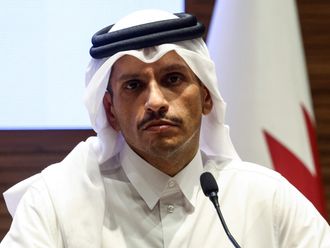Doha: Contributions made by Muslims to the world of science and knowledge from the 8th to 15th centuries are being highlighted in an exhibition in Qatar that opened on Thursday.
Showcasing various facets of a fascinating epoch, "the Golden Age of the Arab Sciences" exhibition in Doha gives visitors a rare opportunity to familiarise themselves with the inventions and ideas that originated in the Muslim world in a span of seven centuries.
The event, organised by Total and Katara, in cooperation with the French Embassy and Paris-based Institute of Arab World, portrays the science and technology used in the early Arab and Muslim world, and showcases 200 exhibits from 40 galleries and museums from around the world, according to reports in the Qatari daily The Peninsula.
The "Golden Age of the Arab Sciences" displays works by scientists, physicians, astronomers engineers, artists, chemists and architects, who were the leading lights of the ancient Arab and Islamic world.
Besides the display of actual manuscripts, images, works and other texts, audio-visual modules are included in the walk-through of the exhibition, curated by Professor Ahmad Djebbar, a French mathematician and a researcher of scientific history.
Visitors are guided through a path with scientific displays, and speculative and philosophical writings developed out of it. Additionally, an accompanying video shows how common cultural features, such as architectural styles, religion, literature, scientific and musical expression, marked the Arab region at that time.
A fragment of Al Kuhl's 13th century work "Treaty of Perfect Compasses" highlights that the Muslim world was at the forefront of scientific innovation and thinking during that era.
The exhibition's first section shows techniques developed to observe and measure the sky and the earth, giving rise to astronomy and cartography. Major exhibits include a series of astrolabes, navigation instruments developed by the Arabs. Astronomy was also used to resolve problems related to religious practice, such as calculating prayer times, divisions of the lunar calendar and the direction of Makkah.
The man and environment section of the exhibition gives an account of knowledge relating to man, his surrounding, technology developed for various social and physical needs. This includes Ibn Sina's "Cannon of Medicine", still a point of reference for physicians around the world. Utensils for medicinal preparations and sphero-conical vases to hold explosive chemicals are also on display.
Other sections of the exhibition look at engineering, mathematics, hydraulics and the management of water resources and the contributions made by mathematical thinking to architectural design and construction.
"The Institute of Arab World has for many years been playing a key role in promoting culture, language and Arab history," said Gilles Bonnaud, the French Ambassador to Qatar. "The institute radiates a rich and diverse civilization and is a distinguished educator. It also builds a passage between cultures and people.
"We hope that this event will provide Qataris and all communities living in Qatar with a retrospective of the greatness of the Arabs and their contributions to science throughout the ages," he said at a press conference.
The exhibition ends on April 30.











